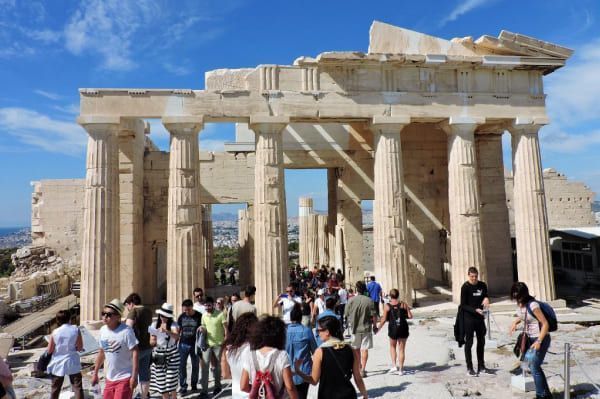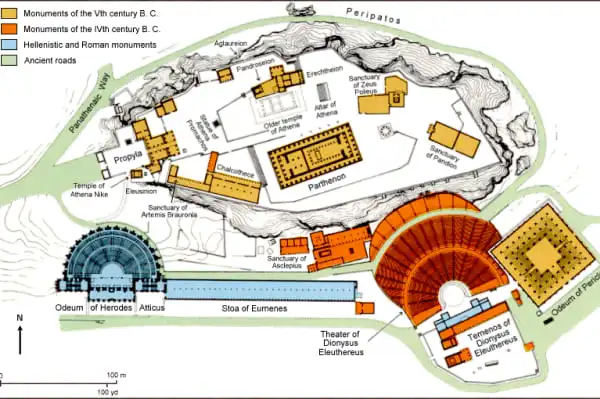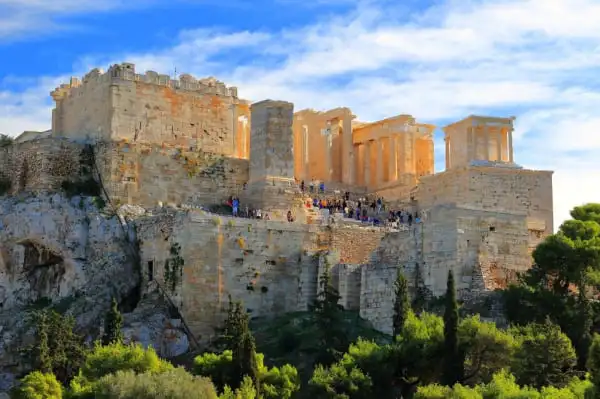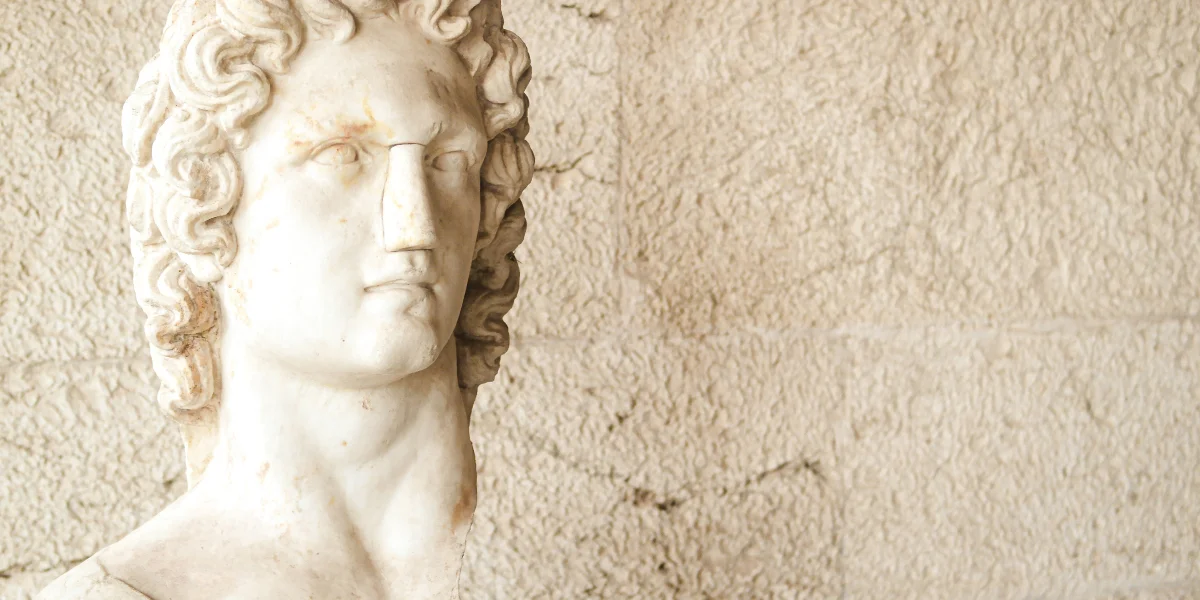
Greek art and architecture, an everlasting treasure of human creativity, have transcended the boundaries of time and geography. From the stately columns of the Parthenon to the evocative depictions of mythological tales, the artistry of ancient Greece remains an enduring source of inspiration and a testament to the cultural richness of this remarkable civilization.
Foundations of Greek Art and Architecture
Greek art and architecture hold a special place in the annals of human history. Revered for their grace, beauty, and innovation, these creations remain iconic symbols of a civilization that continues to inspire and captivate the world. The foundations of Greek art and architecture reveal an extraordinary blend of creativity, craftsmanship, and cultural values that have left an indelible mark on the legacy of Western culture.
Roots in Myth and Reality
Greek art and architecture were deeply rooted in the realms of mythology, religion, and everyday life. The Greeks drew inspiration from their mythological pantheon, crafting statues and structures that honored their gods and heroes. Yet, they also sought to celebrate the human form and achievements in their art, ushering in a shift from the purely divine to the mortal sphere.
Sculpture and the Human Form
The Greeks were masterful sculptors, creating lifelike statues that showcased an unparalleled appreciation for the human form. These sculptures sought to capture the idealized beauty and physical prowess of the human body, often resulting in works of breathtaking elegance and symmetry. The “Doryphoros” by Polykleitos and the “Venus de Milo” are prime examples of this dedication to harmonious proportions.
The Parthenon and Architectural Brilliance
The Parthenon, a Doric temple dedicated to Athena, stands as a prime example of Greek architectural brilliance. Its impressive columns and intricate friezes epitomize the Doric style, known for its robust simplicity and impressive visual impact. The Parthenon’s architecture was also characterized by the use of optical illusions, such as slight curvatures, to create a sense of perfect symmetry and beauty.
Mythological Narratives and the Acropolis
The Acropolis of Athens, perched atop a rocky hill, housed a plethora of stunning sculptures and architectural wonders, all rooted in Greek mythology. The Erechtheion, with its Caryatid Porch, was dedicated to both Athena and Poseidon, while the Parthenon celebrated the city’s patron goddess. These structures incorporated sculptures and friezes that told mythological stories and reinforced religious beliefs.
The Evolution of Democracy
Greek art and architecture were not only aesthetically pleasing but also symbolized the ideals of democracy. The Agora, a public gathering place, was where citizens convened to discuss and decide on important matters, giving rise to the foundations of modern democracy. The Acropolis, overlooking the Agora, became a symbol of the democratic principles that flourished in ancient Athens.
A Lasting Legacy
Greek art and architecture have left an enduring legacy. They continue to be a source of inspiration for artists, architects, and scholars across the world. The emphasis on the human form, proportion, and symmetry in Greek art has had a profound impact on the development of Western artistic traditions. The principles of balance, harmony, and aesthetic beauty pioneered by the Greeks remain fundamental in contemporary design and art.
Greek art and architecture are a reflection of a culture that cherished not only the divine but also the human spirit. These masterpieces are monuments to creativity, innovation, and the celebration of the human form and intellect. They remind us of the timeless appeal of beauty, proportion, and the pursuit of knowledge—a testament to the enduring brilliance of the ancient Greeks and the foundations of Western art and architecture.
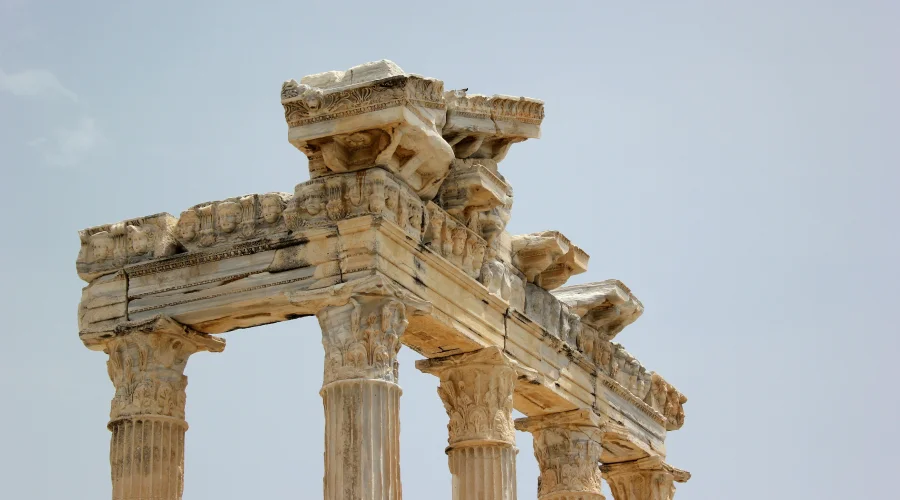
Archaic Greece: Birth of Classicism
The Archaic period’s kouros and kore statues and the emergence of Doric temples set the stage for what was to come. These early works, with their idealized forms and proportions, were a precursor to the more refined and influential creations of the Classical period.
Cultural Rebirth
The Archaic period was a time of reawakening and regeneration. After centuries of decline, Greece’s city-states emerged with renewed vigor. Athens, Sparta, Corinth, and other powerful city-states each brought its unique culture to the forefront. This renaissance was marked by increased trade and interactions with other cultures, including Egypt and Mesopotamia, which profoundly influenced Greek art and brought a fresh exchange of artistic ideas.
Sculpture and Human Form
One of the most striking features of Archaic Greek art was the newfound appreciation for the realistic depiction of the human form. Before this period, Greek art had been characterized by abstract or stylized representations. Archaic sculptors began to explore the nuances of proportion and the anatomical accuracy of the human body. The iconic “Kouros” and “Kore” sculptures, idealized male and female figures, exemplified this fascination with the human form.
Kouros and Kore Figures
“Kouros” statues, often portraying young men, were notable for their rigid, upright poses and the archaic smile adorning their faces. In contrast, “Kore” statues, representing young women, displayed a progression toward more naturalistic forms and expressions. The precise rendering of the human body marked a significant departure from earlier abstract depictions.
Architectural Innovations
Archaic Greece also saw significant architectural advancements. The construction of temples in the Doric order commenced during this era, featuring robust columns that supported these structures. The “Heraion” at Olympia, believed to be one of the earliest Doric temples, exemplified the evolving architectural direction of the time.
Cultural Significance
The Archaic period extended beyond art and architecture. It was a time of cultural and political emergence for the Greek city-states. Athens, in particular, would become synonymous with democratic principles and intellectual achievements. The exchange of ideas, the emphasis on civic life, and the development of cultural identity during this period laid the foundation for the intellectual flourishing of the forthcoming Classical era.
The Path to Classicism
Archaic Greece can be viewed as a transitional phase in the evolution of classicism. It paved the way for the profound intellectual and artistic achievements of the Classical period, epitomized by the works of renowned artists like Phidias and the architectural marvels of the Parthenon in Athens.
A Timeless Legacy
The legacy of Archaic Greece is profound. Its reverence for the human form, exploration of artistic realism, and architectural experimentation laid the groundwork for the timeless principles of classicism. The ideals of proportion, harmony, and the celebration of the human experience that emerged during this period would be cherished and perfected in the height of Greek and Roman art and culture.
Archaic Greece marked a revolutionary period in the world of art and culture. It represented the dawn of classicism, a style that would continue to influence art, architecture, and the pursuit of beauty and wisdom for centuries. The Archaic period serves as a testament to the unending human quest for perfection and the enduring power of artistic ideals that transcend time and place.

Classical Greece: The Zenith of Artistry
The Classical era represents the height of Greek art and architecture. During this period, naturalism and a profound appreciation for the human form took center stage. The Parthenon, a Doric temple dedicated to Athena, is a quintessential example of this era’s artistry. Its precise proportions, meticulous attention to symmetry, and the optical illusion of straight columns on a curved structure showcase the Greeks’ unwavering commitment to harmony and beauty.
Mythology and Greek Art
Greek mythology was intricately woven into the fabric of Greek art and architecture. Mythological narratives adorned pottery, sculptures, and architectural reliefs, illustrating the profound connection between the Greeks and their cultural and religious beliefs. From the majestic statue of Zeus at Olympia to the awe-inspiring Winged Victory of Samothrace, these works brought the gods, heroes, and mythical creatures to life.
The Role of Mythology
Greek mythology, with its pantheon of gods and goddesses, epic heroes, and fantastical creatures, played a central role in the lives of ancient Greeks. Myths not only explained the origins of the world but also conveyed moral lessons, societal values, and the struggles and triumphs of humanity. These narratives became a wellspring of inspiration for artists seeking to convey the essence of these tales in their works.
The Divine Pantheon
Greek mythology introduced a diverse cast of divine characters with distinctive attributes and personalities. These deities provided artists with an array of subject matter. Zeus, the king of the gods, often appeared as a powerful, bearded figure holding a thunderbolt, while Athena, the goddess of wisdom, was depicted as a serene figure with her iconic helmet and shield.
Sculpture and Mythological Representation
Sculpture was one of the primary mediums through which Greek mythology was visually expressed. The sculpted forms of gods, heroes, and mythological creatures adorned temples, public spaces, and private residences. The Archaic period saw the emergence of the iconic “Kouros” and “Kore” statues, which embodied youthful beauty often associated with divine beings.
Mythological Narratives in Architecture
Greek temples, like the Parthenon in Athens, incorporated mythological narratives in their design and decorative elements. The pediments and friezes of these structures were adorned with scenes from mythology, such as the battle between the gods and the Titans. These artistic elements not only served to honor the deities but also to educate and inspire those who visited the temples.
Depiction of Heroes
Greek heroes, such as Heracles (Hercules) and Achilles, were popular subjects in art. These heroes, often depicted in the nude to showcase their physical prowess, embodied the human struggle and the pursuit of greatness. The stories of these heroes, their trials, and their ultimate triumphs resonated deeply with the Greek psyche and became powerful themes in Greek art.
Influence on Later Art Movements
The impact of Greek mythology on art extends beyond the classical period. It has influenced subsequent art movements, including the Renaissance, neoclassicism, and modern art. The enduring appeal of mythological themes continues to captivate artists and audiences alike.
A Bridge to Understanding
Greek art’s fusion with mythology provided a bridge to understanding the complex world of ancient Greece. These artistic representations were not just aesthetic expressions but also a means to explore and comprehend the deeper layers of Greek culture, values, and beliefs.
Mythology and Philosophy
The relationship between Greek mythology and philosophy is also worth noting. Philosophers like Plato and Aristotle incorporated mythological narratives into their philosophical dialogues, using the stories of gods and heroes as allegorical tools to explore deeper existential and ethical questions.
Greek art and mythology created a dynamic partnership that resonates through the annals of art history. The stories of gods and heroes continue to inspire artists and viewers, inviting us to explore the timeless and universal themes of human existence. The myths and the art they inspired provide a glimpse into the soul of ancient Greece, offering a profound connection to the human experience and the enduring power of storytelling through visual expression.
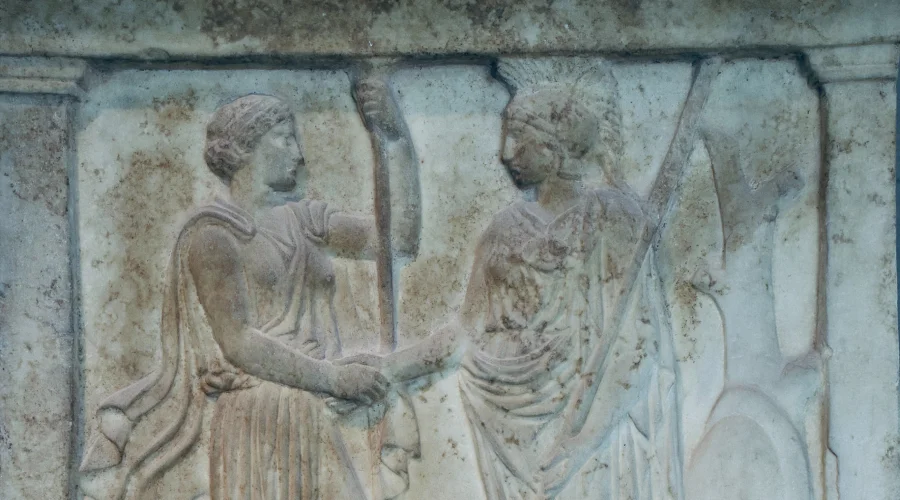
Conclusion
Greek art and architecture stand as a beacon of human achievement, transcending the centuries to inspire and captivate the world. They remind us that the pursuit of beauty, proportion, and harmony is a timeless aspiration, one that continues to shape our understanding of art, architecture, and the enduring power of human creativity. The legacy of ancient Greece in the realm of art and architecture is an enduring testament to the boundless potential of human expression.
More information
The Acropolis ticket grants visitors access to the archaeological site of the Acropolis and its slopes, including the Parthenon, the Theater…
The Acropolis has played a significant role in Greek history and culture and is widely regarded as one of the most important archaeological…
Taking the metro is a quick and convenient option for getting to the Acropolis in Athens. There are two metro stations that can be used to re…

